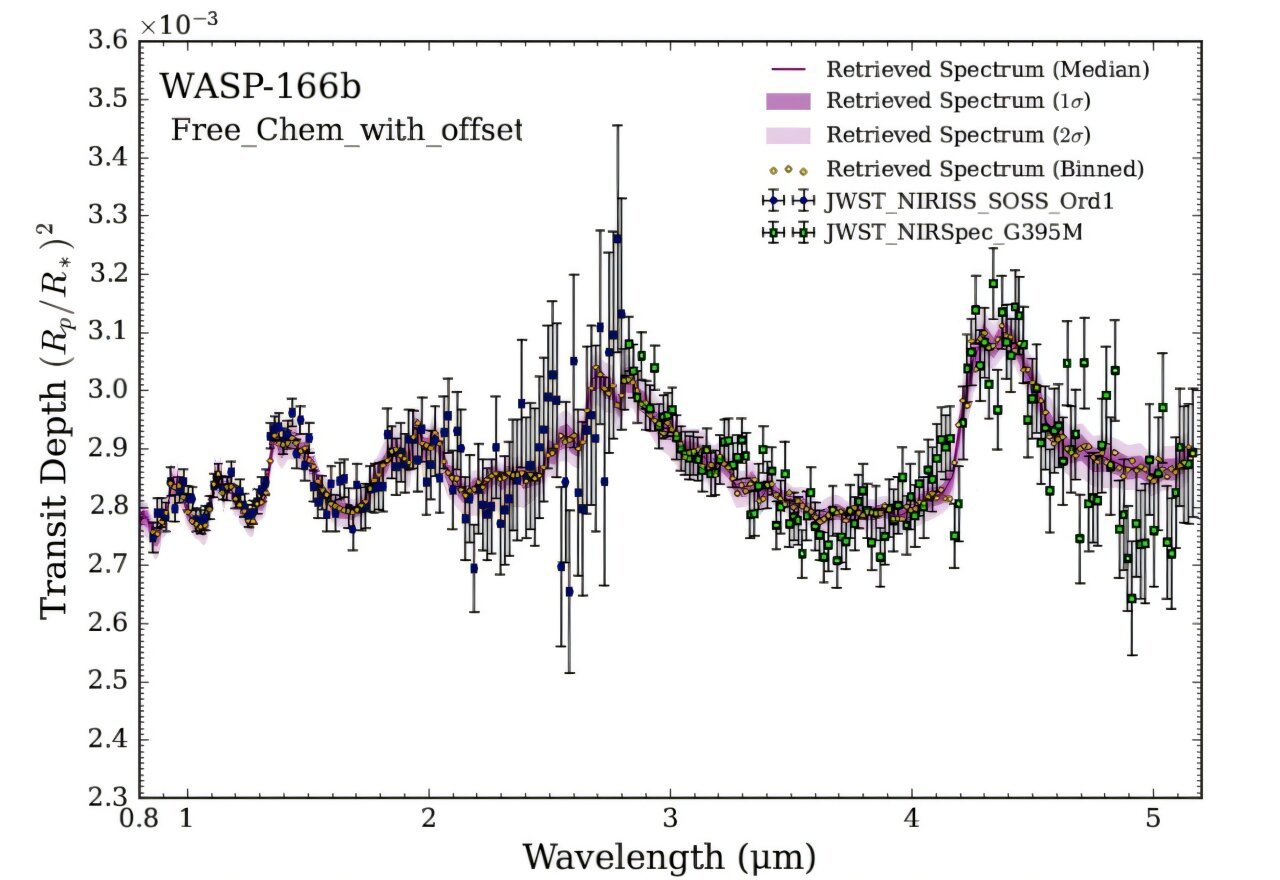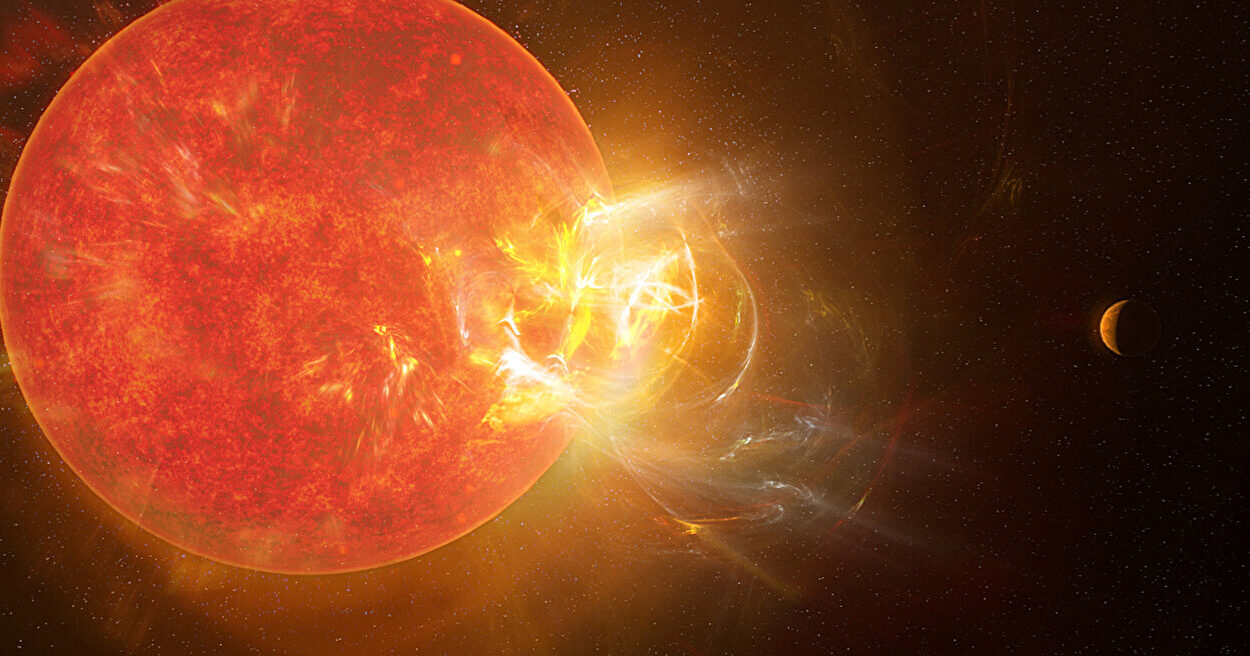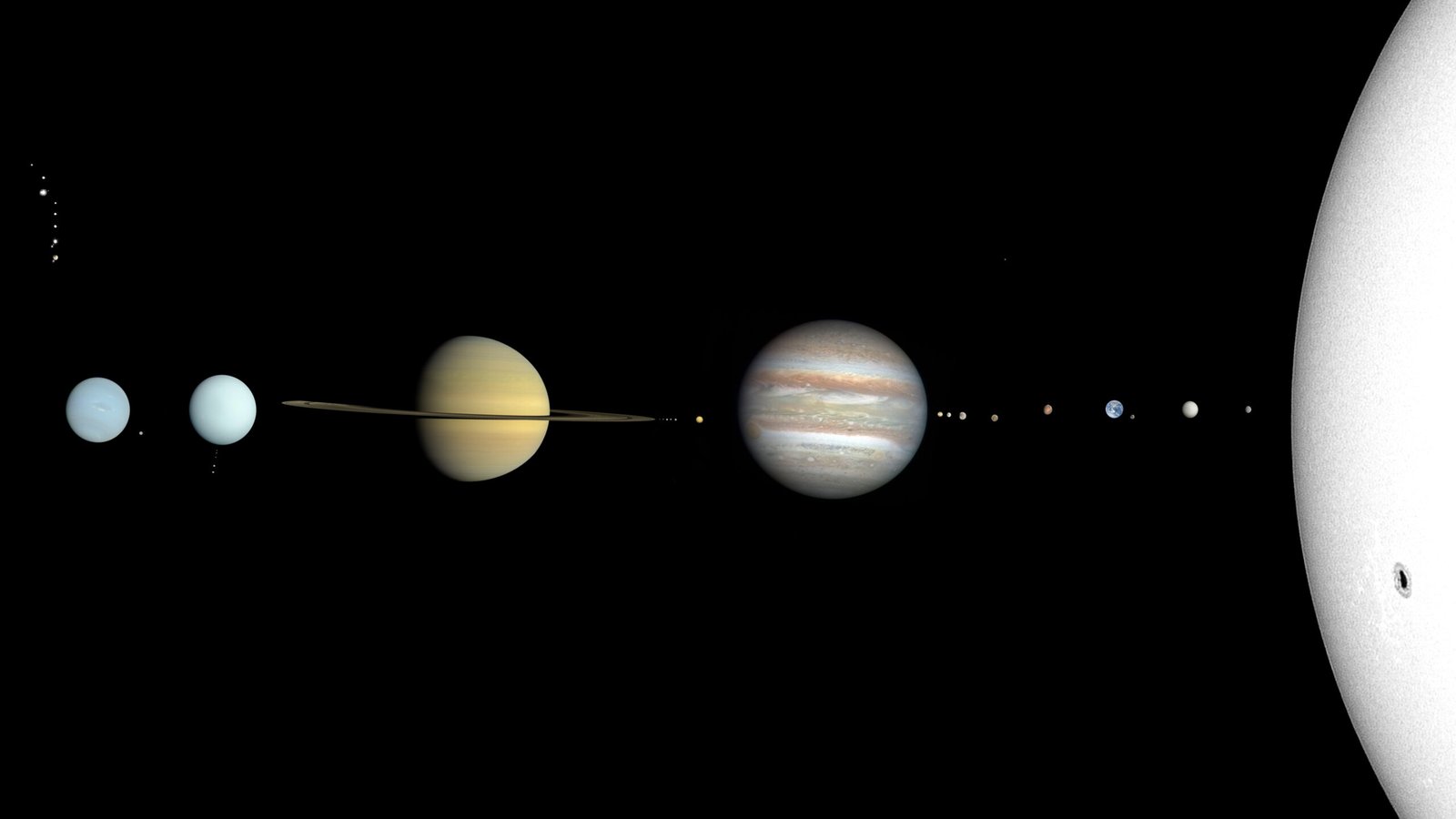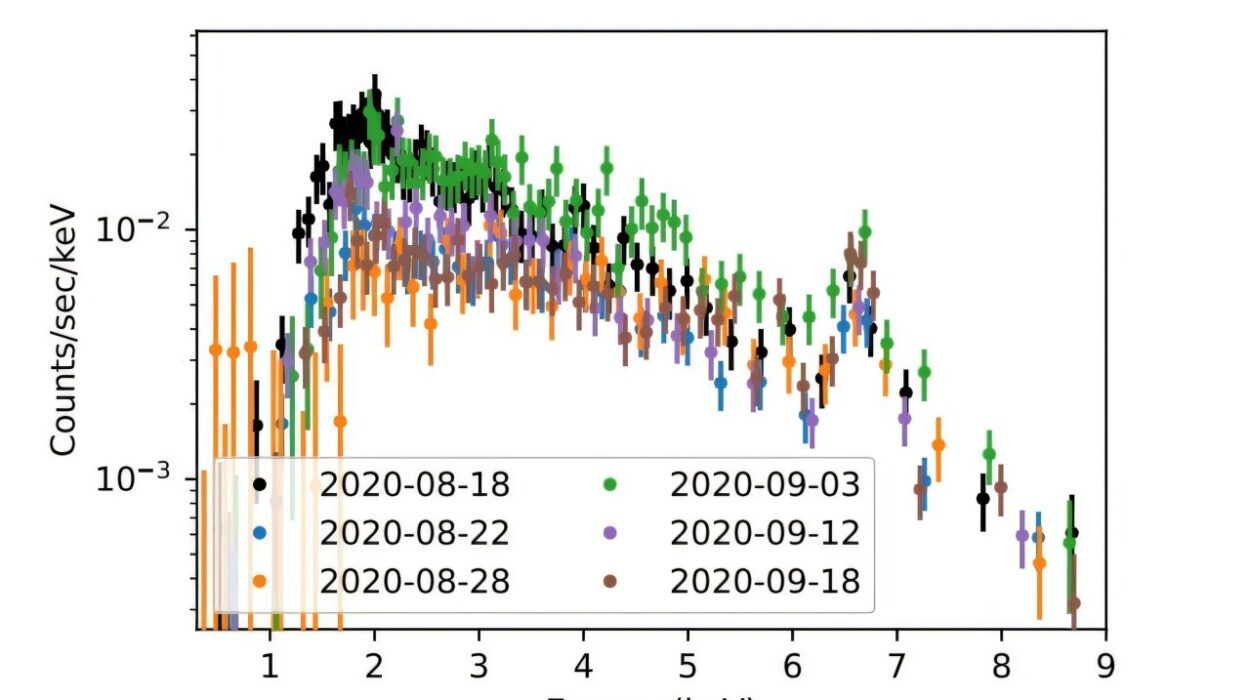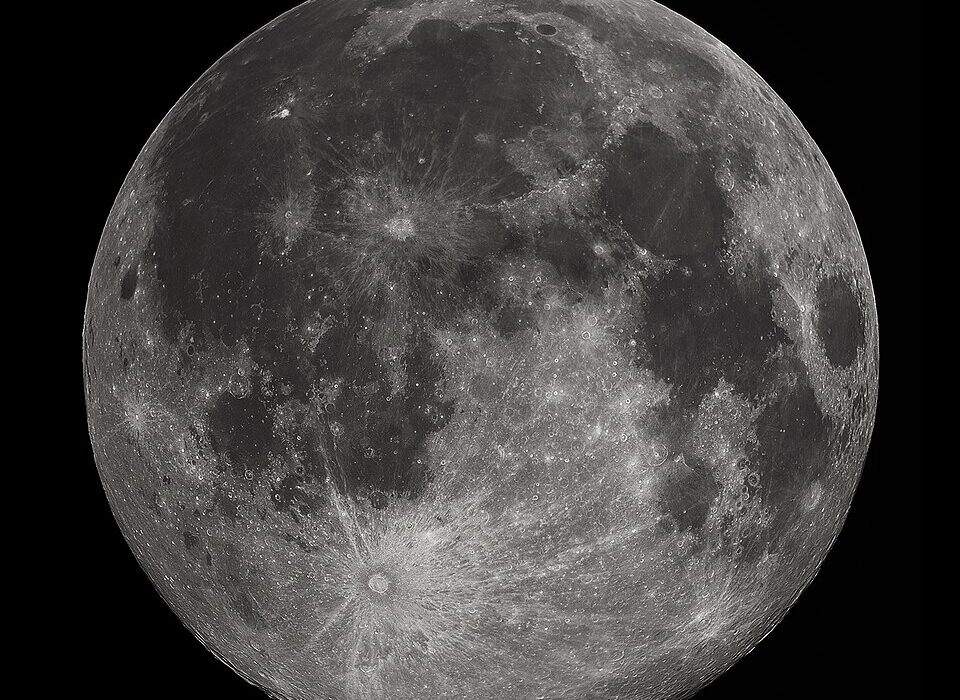Using the powerful instruments of the James Webb Space Telescope (JWST), astronomers have made significant strides in characterizing the atmosphere of a distant exoplanet, WASP-166 b. This discovery, which sheds new light on the composition of hot exoplanet atmospheres, was reported on December 31 via the arXiv preprint server. WASP-166 b is a fascinating world located over 360 light-years away in the constellation Pegasus, and its unique characteristics are of particular interest to astronomers.
WASP-166 b is classified as a hot super-Neptune exoplanet, a type of planet that is much larger than Earth but smaller than the gas giants in our own solar system. With a radius about seven times larger and a mass 32 times that of Earth, WASP-166 b represents a category of exoplanet that orbits close to its host star, receiving intense radiation. Its proximity to its parent star, along with its considerable size, contributes to its hot environment. The equilibrium temperature of WASP-166 b is estimated to be around 1,270 K (997°C), which is sufficiently hot to affect the planet’s atmospheric composition. In fact, its position in space places it in what is referred to as the “hot Neptune desert”—a region characterized by high levels of insolation and a sparse population of planets of intermediate size. This area of space is so-called because, while the zone can host many types of planets, very few of them occupy the size range between Neptune and the smaller gas giants, creating a noticeable gap.
WASP-166 b orbits its star, also named WASP-166, once every 5.44 days at a distance of only 0.067 astronomical units (AU), which is less than a tenth of the Earth-Sun distance. This rapid orbit means that the planet experiences intense heat from its host star, a crucial factor in the formation of the planet’s atmosphere. The parent star, WASP-166, is an F9V-type star located approximately 368 light years from Earth. Slightly larger and more massive than the Sun, it has an effective temperature of 6,050 K, a metallicity of 0.19 dex, and an estimated age of around 2.1 billion years. The star’s attributes contribute to the unique stellar environment in which WASP-166 b resides.
To unravel the secrets of this exoplanet’s atmosphere, a team of astronomers led by Andrew W. Mayo of San Francisco State University employed the state-of-the-art capabilities of JWST, utilizing two specific instruments: the Near Infrared Imager and Slitless Spectrograph (NIRISS) and the Near Infrared Camera (NIRCam). Together, these instruments allowed the researchers to perform in-depth observations of the planet during its transit across the face of its star, a key opportunity for investigating the composition of the planet’s atmosphere.
The data revealed intriguing details about WASP-166 b’s atmosphere, particularly the presence of water and carbon dioxide. These two compounds, which dominate the planet’s atmospheric spectrum, offer valuable insight into the planet’s chemical makeup and thermal properties. In addition to these dominant compounds, JWST’s powerful sensors detected a faint signature of ammonia, and there was also evidence of cloud deck pressure in the upper reaches of the atmosphere. Despite this, the researchers found no trace of other common exoplanet atmospheric components like carbon monoxide, which suggests that WASP-166 b’s atmosphere may not have the same complexity found on some other similar exoplanets.
The researchers’ measurements of the planet’s carbon-to-oxygen ratio offered a surprising result: WASP-166 b’s ratio is about 0.282, which is notably lower than the ratio observed in its host star (0.41) and significantly less than the Sun’s carbon-to-oxygen ratio of 0.55. This implies that WASP-166 b’s atmosphere has a high metallicity, with a level of about 1.57. This relatively high metallicity is intriguing because it hints at specific processes occurring during the formation and evolution of the planet. The study suggests that these results may reflect planetary formation mechanisms, including accretion of planetesimals followed by core erosion or the impact of photoevaporation—an atmospheric escape process due to stellar radiation.
In particular, the presence of high metallicity points toward significant chemical enrichment in the planet’s atmosphere, a phenomenon that could be related to the types of materials that formed the planet in its early years. The observed imbalance in the carbon-to-oxygen ratio could reflect either the kinds of materials the planet originally incorporated or the effects of secondary processes that altered its composition over time. Such factors would have impacted the evolution of the planet’s atmosphere, influencing not only its chemical structure but also its current thermal and atmospheric dynamics.
The JWST data provided a wealth of information about WASP-166 b, a planet that offers a glimpse into the potential atmospheric conditions of other exoplanets in the same size and temperature range. While WASP-166 b’s atmosphere contains familiar compounds like water and carbon dioxide, which could potentially allow the planet to host signs of life in other circumstances, its specific physical conditions—hotter temperatures, high metallicity, and intense stellar radiation—offer a different kind of study. WASP-166 b exemplifies the diversity of exoplanetary atmospheres, as each world follows a unique path depending on its formation, environmental conditions, and the types of stellar radiation it experiences.
The findings from the JWST observations contribute to an important facet of exoplanet research—the study of hot Neptunes, or “super-Neptunes.” These planets occupy a distinct niche in the broader exoplanetary landscape, and understanding the conditions and composition of their atmospheres can help researchers make sense of the formation and evolution of planetary systems in general. While current missions are focused on directly studying planets within our own solar neighborhood, observations such as those conducted for WASP-166 b extend our understanding of planetary science, providing essential data on the factors that shape alien atmospheres and the processes that occur over vast time scales.
Reference: Andrew W. Mayo et al, Detection of H2O and CO2 in the Atmosphere of the Hot Super-Neptune WASP-166b with JWST, arXiv (2025). DOI: 10.48550/arxiv.2501.00609
